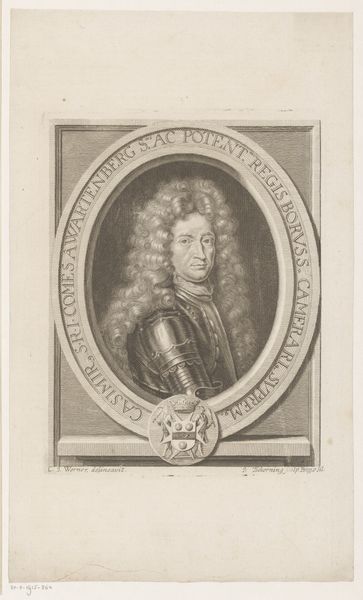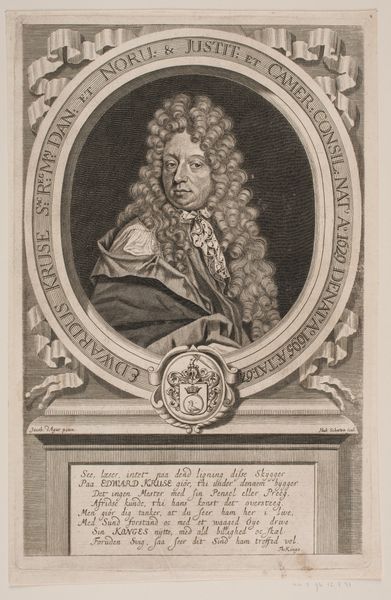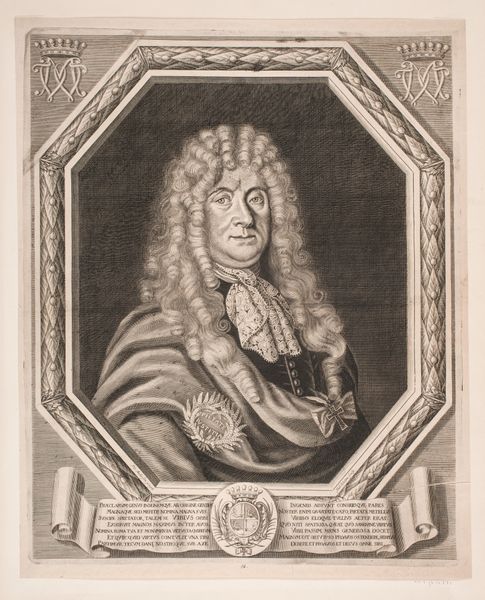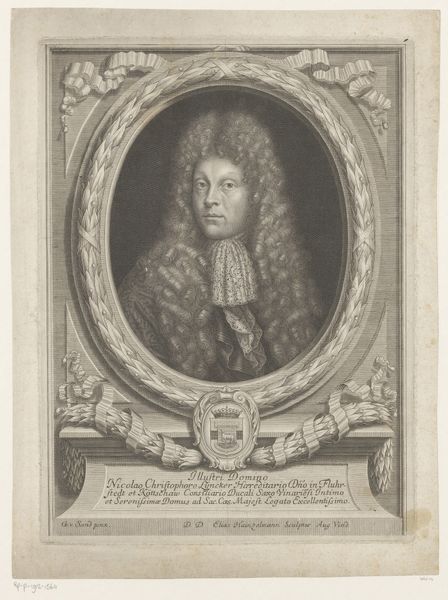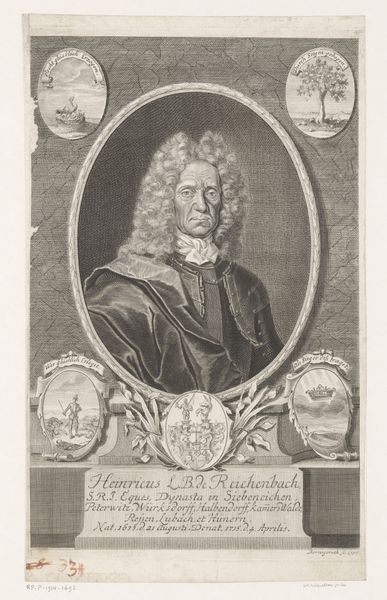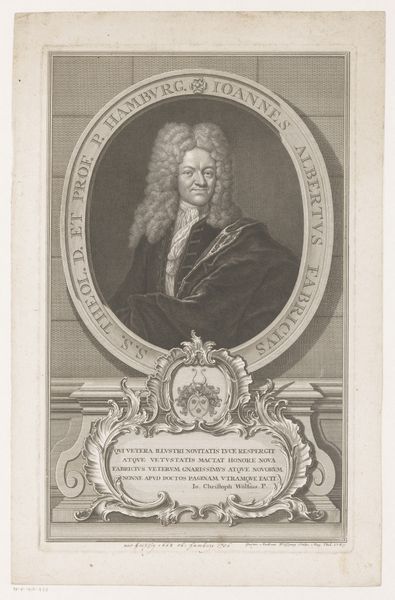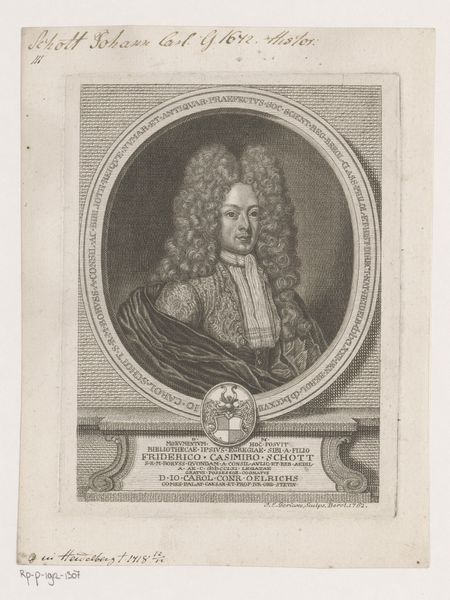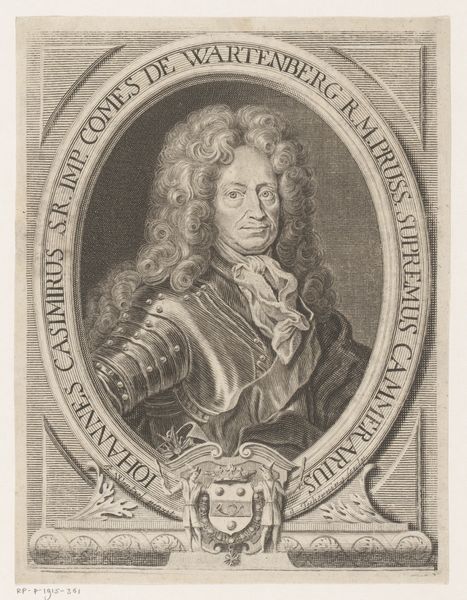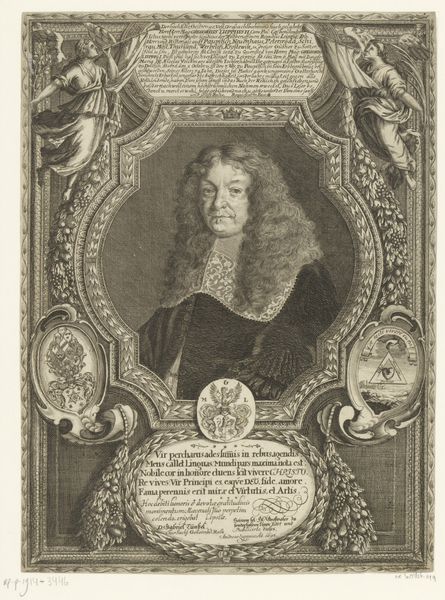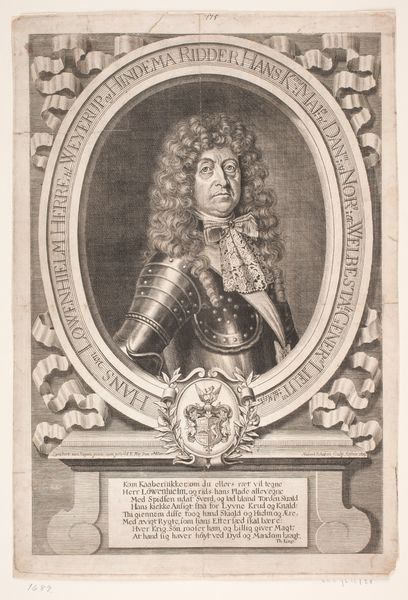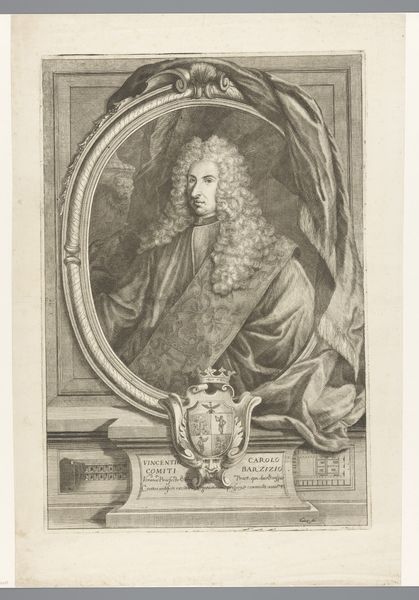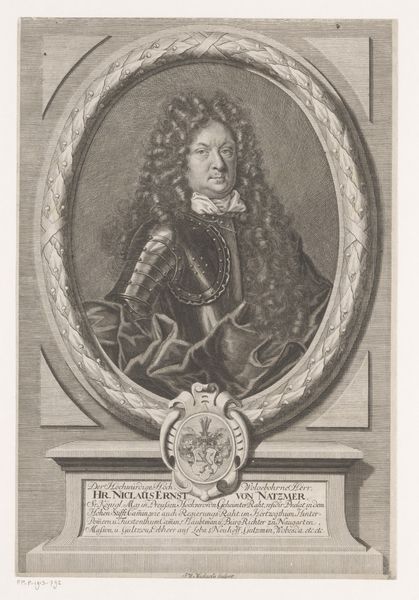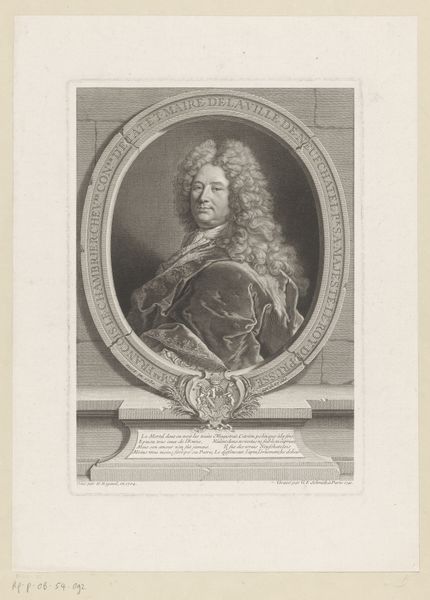
print, engraving
#
portrait
#
baroque
# print
#
old engraving style
#
history-painting
#
engraving
#
calligraphy
Dimensions: height 248 mm, width 166 mm
Copyright: Rijks Museum: Open Domain
Curator: Here we have Nicolas de Larmessin's "Portret van Anne Hilarion, comte de Tourville," dating from 1642 to 1694, housed here at the Rijksmuseum. It's an engraving, full of baroque sensibility. What's your first take? Editor: Well, the intricacy of the lines strikes me immediately. The way the light plays across the armor, the delicacy of the lace—it's quite a visually arresting piece. Curator: Absolutely. The engraver’s craft is undeniable. Look at how the hatching creates volume and texture. It begs the question: what kind of workshop produced such precision? How did the economics of printmaking influence artistic choices during this period? This wasn't simply high art; it was a consumable product. Editor: That's a good point, and yet, it also invites a formal reading. Observe the oval composition, how it draws the eye directly to the subject's face, framed so deliberately. There's an almost structural elegance to it, even considering the ornate details. The symmetry also holds my gaze; do you think that symmetry adds to its authority? Curator: Authority is constructed, surely. Consider Tourville’s role—a Comte and Admiral. The portrait performs a very specific function: the creation and dissemination of a powerful image, one intrinsically linked to class and military might. How does the materiality of a printed image aid in distributing and reinforcing that authority? Editor: True. I agree there is intent and fabrication, though I remain taken by how Larmessin balances capturing individual likeness with the stylized conventions of portraiture in that era. The contrast between the rigid armor and the softness of his expression… I wonder what this meant to his contemporaries. Curator: The choice of engraving itself has social implications. Engravings allowed for wider distribution, impacting who could consume and engage with these images of power. It’s all connected: the means of production, the social standing of the subject, and the intended audience. Editor: Ultimately, the engraving succeeds as a piece of visual rhetoric, beyond its function as social record. I appreciate that the engraving offers clarity, while revealing subtle aspects of his nature. I now wonder how successful they were at conveying this, and more pieces like it, at the time. Curator: Indeed. It shows how examining process and materials expands our understanding of artistic production and social messaging.
Comments
No comments
Be the first to comment and join the conversation on the ultimate creative platform.
